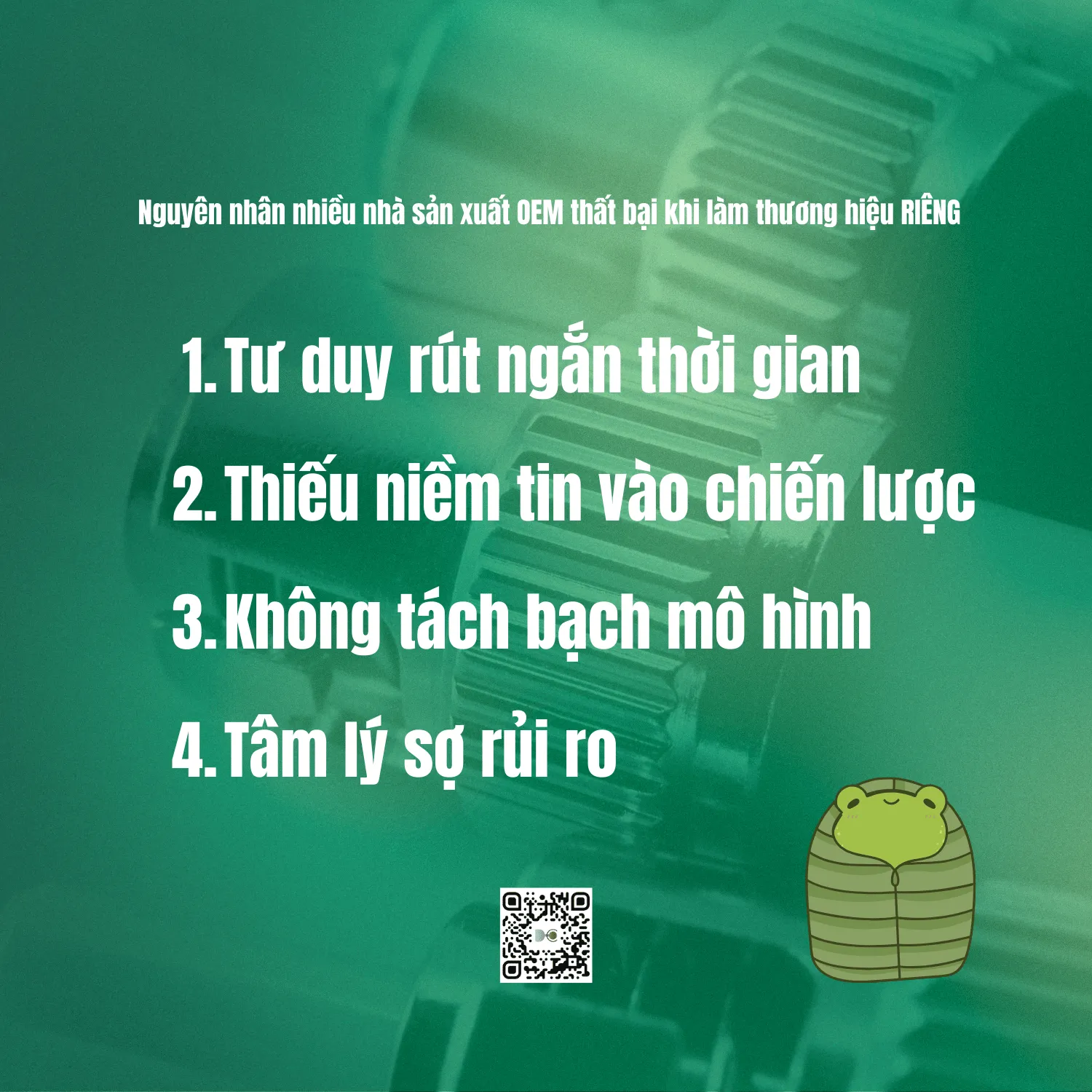I once worked with a large OEM company in the South for nearly a year – an international standard factory exporting to Europe and Japan. At the beginning, everyone was excited about the plan to build their own brand. But then, everything gradually returned to the “safe zone” of the OEM. That story left many lessons about the causes of failure, and they almost all started from… the owner himself.
Day 1: A Changing Spirit and a Strong Promise
When I met the business owner, I immediately saw his determination. He said:
“I don’t want to spend my whole life just processing. I want a Vietnamese brand that can stand on par with foreign products.”
We made a clear plan: market research, new product design, domestic distribution channel building, and marketing budget preparation for at least 3 years. At that time, the boss agreed to everything, signed and approved quickly, almost without hesitation.

Month 3: Start to feel “impatient”
The first product was launched, receiving positive feedback from some test customers. But sales were not significant, marketing and personnel costs were steadily “eating” the monthly budget.
The boss started to ask: “Is there a way to sell faster? Or reduce the advertising budget, focus on personal relationships to push the product?”
I explained that building a brand takes time for customers to recognize, but he seemed to be used to the speed of “signing a contract – producing – receiving money” of the OEM, so he started to worry and felt that it was ineffective, or too slow, or the money coming in was not “proportionate” to the money going out…. And many, many reasons to “encourage” going back to the old path

Month 6: Decided to go back to the old way
We were preparing to launch a new product, but the boss stopped us and said:
“This budget is for investing in OEM orders for sure. Branding can be done slowly.”
When I suggested keeping the marketing campaign running, he asked to cut it down and focus resources on export orders. The domestic sales team was withdrawn, and the communication plan was delayed.
After a few weeks, all branding activities were almost frozen. The factory returned to operating 100% for OEM.

Analyzing the causes of failure
- Short-term thinking: Familiar with the fast cash flow of OEMs, the boss cannot stand the slow pace and long-term costs of branding.
- Lack of confidence in the strategy: Although initially agreeing, when results are not immediately seen, confidence in the expert is shaken, easily returning to familiar solutions.
- Not separating the model: Brand resources are “eaten” by OEMs, leading to the brand not having enough time and money to mature.
- Risk-averse mentality: OEMs are stable, brands are unstable – and when faced with a choice, the boss chooses safety.

Lessons learned
From this experience, I realized: for an OEM business to be successful when switching to branding, the prerequisite is not capital or machinery, but the owner’s perseverance.
If the owner is not mentally prepared for 2-5 years of “high investment, low income”, does not accept to empower the professional team, and does not separate resources for the brand, then any plan, no matter how beautiful, will stop halfway.
Branding is not just about “adding a logo” to an OEM product. It requires a long journey, different from the familiar way of operating. And if the owner does not really change the mindset, it is easy to fall into the scenario I have witnessed: starting with a dream, ending with returning to the safe zone.











